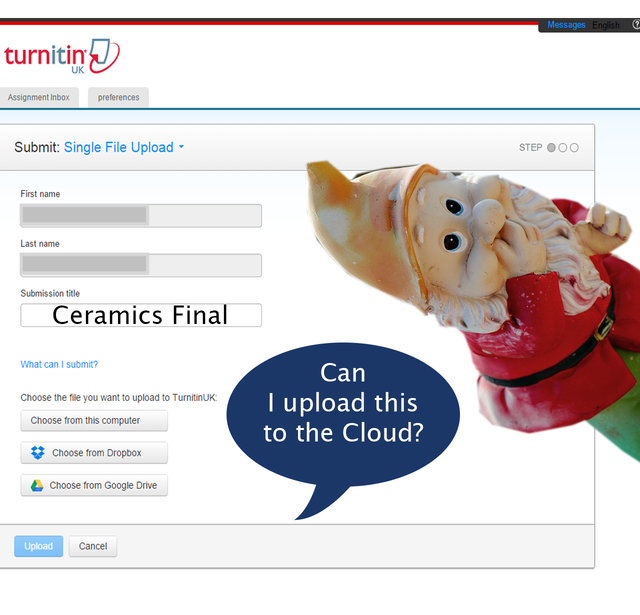When TurnItIn Fails
 By: Tony DePrato | Follow me on LinkedIn
By: Tony DePrato | Follow me on LinkedIn
Plagiarism is serious issue for most high schools. It is rare to find a school without a detailed plagiarism policy. Most of these policies have a few tiers, because it is common for students to commit plagiarism more than once in their academic career.
Unfortunately, the tools educators rely on only cover a small portion of things students can plagiarize. In the last decade I have seen inauthentic:
- Computer Science projects
- Art projects
- Websites
- Math internal assessments (IB)
- Research papers with a perfect Turn It In score
- Foreign language course work
- 3D printing
- etc…
In many of these cases, the student and their parents argued that the work was not plagiarized. These people had full legal ownership of the end product, because they paid for the work, or paid for someone to help guide the work.
The work is often a result of tutoring, where the student did technically do the work, but was aided along the way. Sometimes this support did result in the tutor physically contributing to the final product.
These situations are complicated. They are well beyond someone simply copying an academic paper.
Identifying Inauthentic Work and Projects
As soon as I mention plagiarism, people are quick to react. In every conversation, people ask me, “How did you know it was not their work?” or “How did you prove they did not do it on their own?”.
I find the first problem with most project-based planning is a lack of pre-assessment. Students need a baseline assessment. Teachers should be assessing projects on some sort of trendline. The measurements being used need to monitor growth, and not simply check off rubric boxes.
If teachers set baseline assessments for every project, they can clearly find students who are developing seemingly accelerated skills in a very short time. If the teacher suspects a problem, they can require all the students to do an in-class timed assignment. These assignments need to encourage the students to practice their skills without risking their grades. Students who have been submitting inauthentic work will most likely show signs of stress, become angry, and/or ask to leave the room.
Rubrics Can Be a Roadmap for Cheating
Rubrics should guide students toward a standard, but they should be flexible enough that the end result is a product of a student’s imagination and creativity. In fact, if a student has a great idea, the rubric could be put to the side (a discussion for another time.)
I have seen an increase in teachers providing students with highly detailed rubrics, designed to meet detailed criteria. In those cases, it does seem as if the teacher would like all the student work to be nearly identical. Those highly detailed rubrics are essentially a blueprint for a tutor.
Rubrics that leave no room for personalization, are going to increase cheating. There is a sense that students need to be trusted, and educators must trust students to make good decisions. However, schools usually do not let students use phones during exams, or walk into copy rooms with cameras. Why? Because they are young and impulsive. They will sometimes make bad choices, and simply using good practice to remove temptation is not a violation of trust.
Projects are Assessments, Plan them Accordingly
Many schools have an assessment calendar or planner. These are used to ensure students do not have three or four tests (or exams) on a single day. Projects are often left off of these planning documents. I have made this mistake numerous times leading project-based courses.
Project due dates are often pushed and changed, and therefore the final due date may shift. Adding a due date to an assessment calendar requires other teachers to plan their assessments around those dates. Changing those dates can create havoc. Not being able to change those dates can impact students who need more time, or were denied time due to some unforeseen past issue.
When students feel the pressure of a final project they might make the choice to seek outside help. Having a tutor is not plagiarism, but often project-based disciplines lead to the tutor doing the work on behalf of the student.
Planning projects with three or four important due dates allows student work to be assessed in stages and reduces the risk of missing the final deadline. I personally feel that having multiple stages reduces stress, although my evidence is purely anecdotal.
Current technology and online services cannot identify cheating within project-based courses. Teachers need to know their students, and plan accordingly to reduce those impulsive and misguided choices teenagers often make.
Source: IT Babble Blog and Podcast
You must be logged in to post a comment.